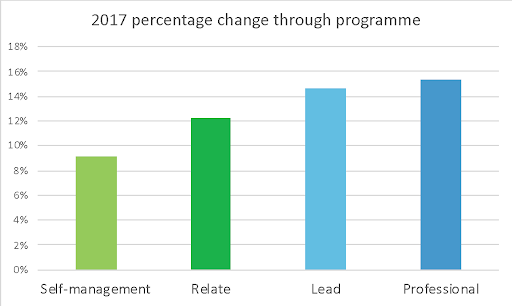To be effective a competency framework must define the behaviours and skills needed by leaders. Organisations then use these models and frameworks as roadmaps for their talent management processes. Many organisations find that over time competencies breed like rabbits, creating conceptual confusion and making it hard to track performance.
To bring clarity to the farm-yard we group competencies into four broad domains:

Self-management covers things like courage, drive and one’s ability to regulate and control emotions and behaviour. Relationships covers skills in initiating, building, and maintaining relationships. Leadership is about building and maintaining effective teams and promoting a vision. Professional covers the technical elements of a role, problem-solving, analysis and planning.
Seen this way, our competency groups form a hierarchy of trainability. That is, the skills associated with self-management and relationships are hardest to train because hard-wired personality drives things like emotional regulation, whereas performance management (for example) is more teachable.
Recently we found evidence from our leadership development work confirming that some competencies are much harder to develop than others. Reviewing data from a leadership development programme Winsborough have run with a large New Zealand organisation for over five years, we saw positive shifts in participant’s leadership, measured by 360 evaluations conducted before and after the programme’s delivery.
“When we looked closely at the participant cohort, we observed that the greatest changes occurred in the two domains that were more trainable: leadership and professional skills (see figure 1). The domain with the smallest improvement was self-management, although we still observed a positive shift,” says Dave Winsborough.

Figure 1: Percentage change through leadership programme by domain
There are three key take-outs from these findings:
- 1. Well-run leadership development programmes do, indeed, produce measurable improvements in management behaviour;
- 2. The more trainable skills of leadership are tangible; and
- 3. Less change is visible from those behaviours related to how we are deep down inside.
From these findings we can conclude that when choosing leaders, it pays to invest time and money in personality assessments to better understand their emotional stability and personality characteristics: changing these is significantly more difficult.
